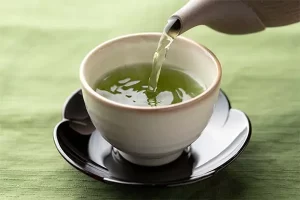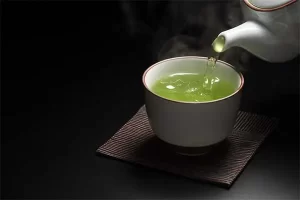The history and manners of the Japanese tea ceremony
History of the Japanese tea ceremony
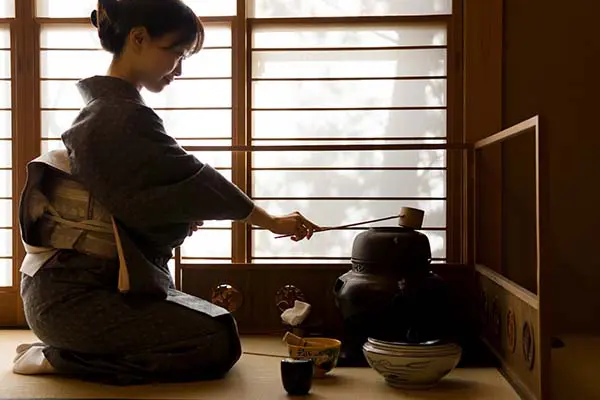
It is said that the history of green tea in Japan was passed down from 815 CE. A Japanese high priest traveled to China and brought back green tea seeds when he returned from China to Japan. However, green tea at that time was highly rare and could only be drunk by a limited number of people such as monks and aristocrats.
In 1191 the high priest, the founder of the Rinzai sect, brought back green tea from China again. He published the “Kissa-yojoki”, a description on drinking green tea for good health, that explained the types and benefits of green tea and spread the habit of drinking green tea in Japan.
This is the basis of the history of the tea ceremony. Since then, it has become common for many prominent tea masters to drink green tea.
The Japanese tea ceremony has a long history and continues to this day as a traditional Japanese culture where people can feel the spirit of traditional Japanese beauty and hospitality.
The purpose of learning the tea ceremony of Japanese culture
The purpose of learning the tea ceremony is to cultivate sensibility and grow both physically and mentally.
- Hone your aesthetic sensibility
- Keep your mind healthy
The tea ceremony is said to be a comprehensive art of Japanese culture. Tea utensils, hanging scrolls, and tea rooms are decorated with a wide range of arts and designs, including “ceramic art”, “crafts”, “architecture” and “spatial art”.
Furthermore, you can experience “beautiful standing behavior” and “respect for people” from the manners of the tea ceremony and Zen terminology.
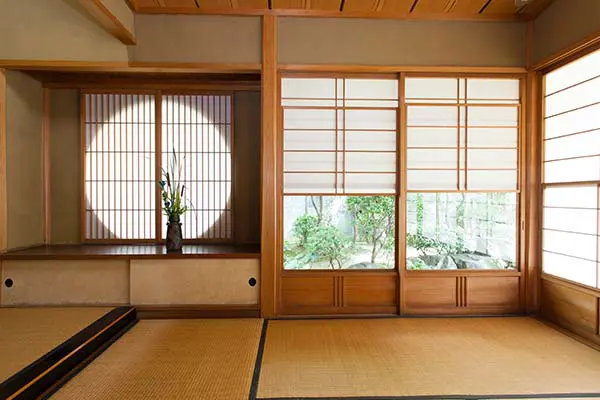
利休七則—Sen no Rikyu’s Seven Rules
茶は服のよきように点て—“Tea should be made with the guests in mind.”
Do not prioritize your ease and efficiency. You need to carefully consider what the person you are drinking with is looking for and change the way you make it.
炭は湯の沸くように置き—“Place the charcoal so that the water boils easily.”
This is a lesson that if you are not prepared, you will not get the important parts right.
夏は涼しく冬暖かに—“Cool in summer and warm in winter”
Keep in mind the seasonality of the season and make sure your guests are comfortable. It is important to be attentive and considerate of others, not just yourself.
花は野にあるように生け—“Decorate it like a flower blooming in the field.”
When you pursue what is essential and strip away excessive ornamentation, its appeal becomes even more pronounced.
刻限は早めに—“Allow plenty of time for action.”
When you have more time to spare and are less rushed, you can relax your mind.
降らずとも傘の用意—“Even if it doesn’t rain get an umbrella.”
Always have an umbrella available for your guests and they will be delighted. It is important to be prepared so that your guests can truly enjoy their tea.
相客に心せよ—“Be considerate of other guests too!”
When people who are together respect each other, a sense of unity is created.
Rikyu’s teaching is often used when talking about “hospitality”. Japanese culture values the familiar things that we usually overlook. It is believed that this can enrich the mind.
Steps in the Tea Ceremony
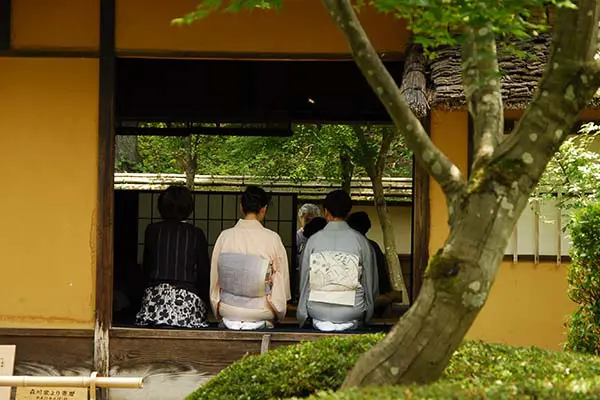
There are various schools of tea ceremony, and the steps of the tea ceremony differ depending on the difference between light tea and dark tea and the school.
We will introduce the manners of light tea brewed at a general tea party with the manners of Urasenke, one of the schools.
1. Appreciate Kakemono (hanging scroll)
When you enter the tea room, proceed to the alcove and see Kakemono and flowers in that order.
Next, proceed to the “temae-za”, the place where the hosts sit on preparing tea, and look at the furnace and the kettle.
2. Have Sweets
The host enters the tea room and the tea ceremony begins.
The owner will say “Please enjoy some sweets”, so let’s thank the owner “Thank you”.
Say “Excuse me for going ahead” to the next customer and have sweets.
3. The Owner Makes Tea
The owner makes tea and serves it to the customer.
Place the matcha bowl between you and your next guest and bow “Excuse me for going ahead”.
Place the matcha bowl in front of you and bow to the host, saying, “Her o-temae (tea ceremony) is very beautiful”.
4. Have Matcha
Holding the matcha bowl.
Turn it clockwise twice with your right hand to avoid the front of the matcha bowl.
Drink tea while tasting it quietly, and make a noise at the end of the drink.
Clean the part of the matcha bowl rim from which you drank with your fingertips and then wipe your fingers with Kaishi paper.
Turn the matcha bowl counterclockwise twice so that the matcha bowl faces forward. Place the matcha bowl on the tatami mat and look at the entire matcha bowl.
Finally, return the matcha bowl to the position where it was taken out.
There are some differences in the manners of steps depending on the school.There are three typical tea ceremony schools: Urasenke, Omotesenke, and Mushakojisenke. Urasenke foams tea firmly to create a mellow taste.
However, Omotesenke and Mushakojisenke do not whisk so much and enjoy the taste of the tea leaves themselves. As you can see, the steps of the tea ceremony are slightly different depending on the school.
It is difficult to experience everything at once, so it is recommended that you first value the spirit of enjoying the tea ceremony and gradually experience the steps of each school’s manners with a deep knowledge of the tea ceremony.
Need for a tea ceremony
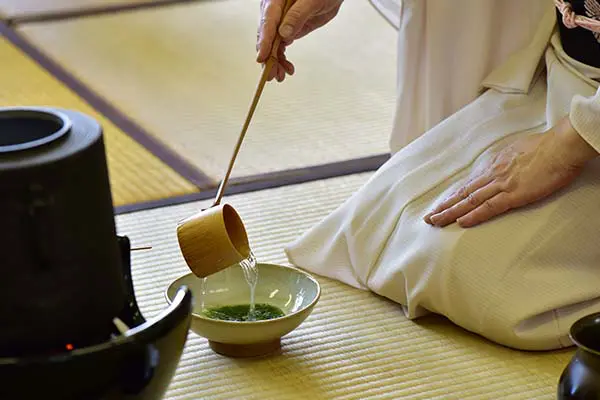
There are benefits to learning the manners of the tea ceremony.
- Learn etiquette through the tea ceremony
- Your posture improves and matcha is nourishing. Therefore, you will be in good physical and mental health.
- You can spend your days calmly by experiencing Japanese culture.
There are many benefits to learning about the tea ceremony.
However, one thing that must not be forgotten as the attitude necessary for the tea ceremony is the idea of ”hospitality” and “traditional Japanese beauty” that are unique to Japanese people.
- Have a grateful heart to the people, the space, and things involved
- Provide pleasant hospitality
- Feel the taste of simple things, accept deterioration and old age, and feel beautiful
We want you to feel the charm of the tea ceremony, including the way of thinking.

